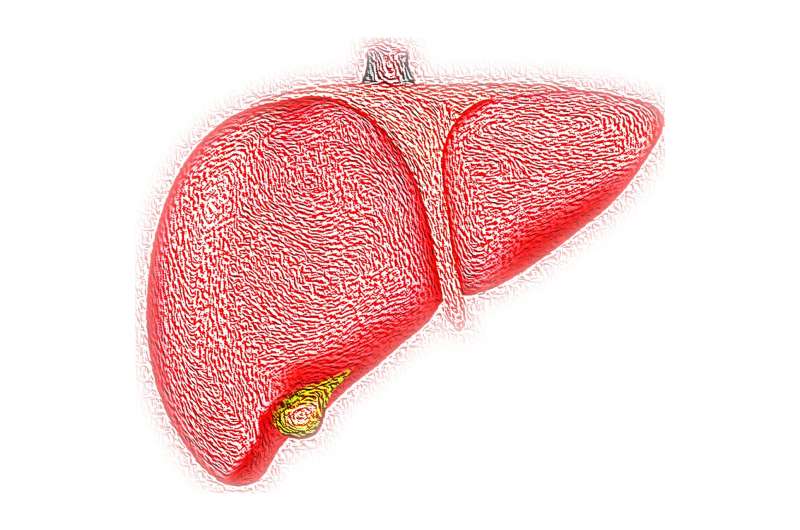Study: First-degree relatives of patients with NAFLD are at risk of liver disease

Approximately one-fourth of the general population worldwide has nonalcoholic fatty liver disease, known as NAFLD, an umbrella term for a range of liver conditions affecting people who drink little to no alcohol. NAFLD can lead to cirrhosis, liver cancer and liver failure.
In a new study, researchers at the University of California San Diego School of Medicine found that first-degree relatives of patients with NAFLD characterized by advanced fibrosis are at a 15% risk of developing the condition.
The results, published in the November 1, 2022, online edition of Journal of Clinical Investigation, shine a spotlight on the importance of early screening of both siblings and offspring of patients with NAFLD.
"Until now, first-degree relatives accompanying their loved ones with liver disease for medical treatment didn't know they were at a greater risk of developing advanced fibrosis themselves," said Rohit Loomba, MD, the study's first author, professor in the Division of Gastroenterology at UC San Diego School of Medicine and director of hepatology at UC San Diego Health.
"Liver disease is a silent killer. Most people don't know they have a liver problem until it's advanced and they develop cirrhosis because there are no obvious symptoms."
According to Loomba, the study's findings could play a key role in early detection.
"Our goal and mission are to identify patients who have more advanced liver problems earlier, and non-invasively, to prevent the progression to cirrhosis," said Loomba, director of UC San Diego School of Medicine's NAFLD Research Center.
NAFLD is a complex metabolic disease with underlying genetic and environmental risk factors. Recent studies have demonstrated that NAFLD and NAFLD-related liver fibrosis are hereditary, and that advanced fibrosis may cluster within the same families.
The study involved nearly 400 first-degree relatives enrolled in two independent cohorts from the United States and Finland. Liver fibrosis was evaluated using magnetic resonance elastography and other noninvasive imaging modalities.
The results have given researchers the scientific evidence needed to recommend routine screenings for advanced fibrosis among first-degree relatives of patients with cirrhosis or advanced fibrosis.
"Siblings and offspring of patients should be evaluated around age 40 or 50," said Loomba. "Our findings could change the standard of care for this high-risk population."
Loomba added that educating first-degree relatives about risk factors, including excessive drinking, weight gain and a sedentary lifestyle are also key.
"Many liver disease-related genes modify based upon a person's lifestyle and what they eat. That means first-degree relatives can help prevent developing advanced fibrosis if they are aware of the risk and willing to make lifestyle modifications," Loomba said. "Patients should be informed of what their risk is, because then they are more likely to change their behavior and lifestyle."
Looking ahead, Loomba said the next step will be to determine genetic factors within families that increase the risk of NAFLD to identify and treat patients earlier.
More information: Nobuharu Tamaki et al, Risk of advanced fibrosis in first-degree relatives of patients with nonalcoholic fatty liver disease, Journal of Clinical Investigation (2022). DOI: 10.1172/JCI162513



















